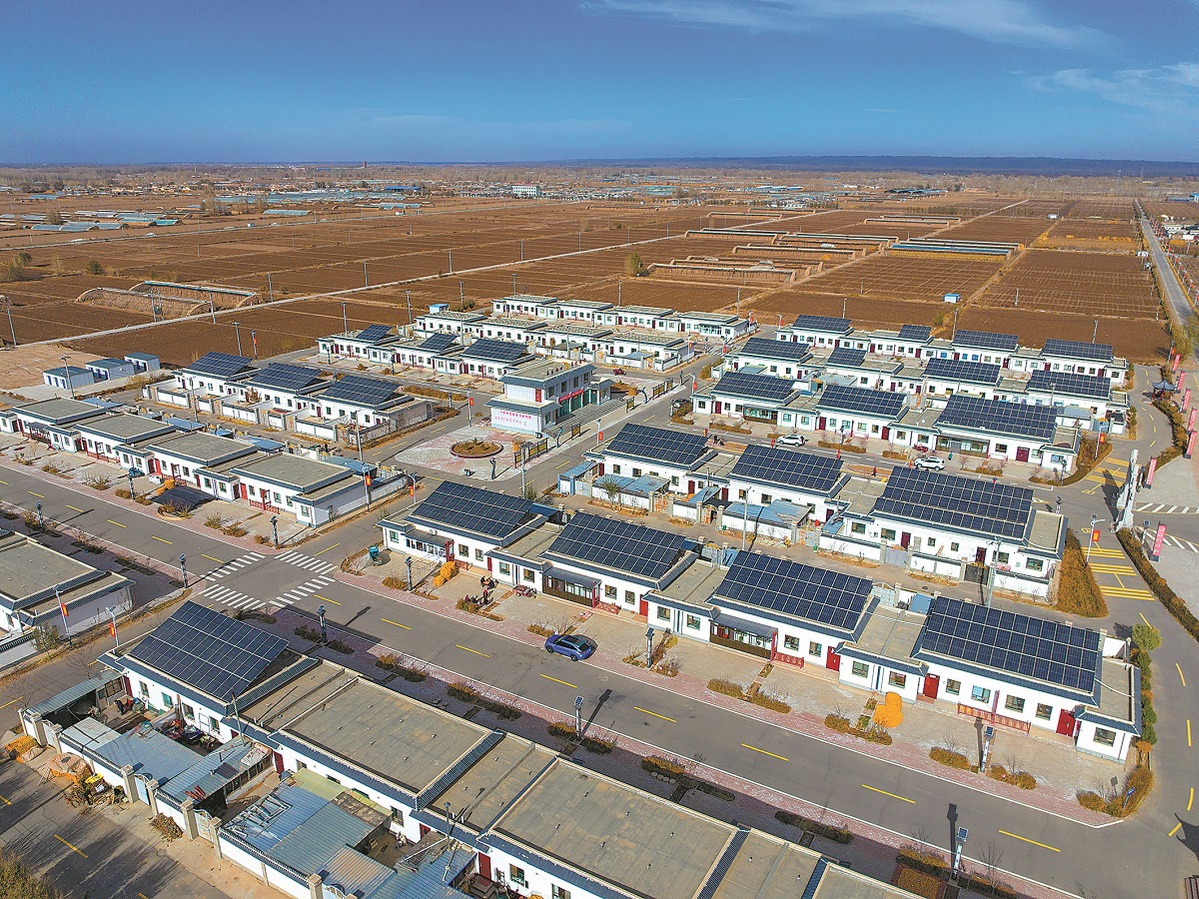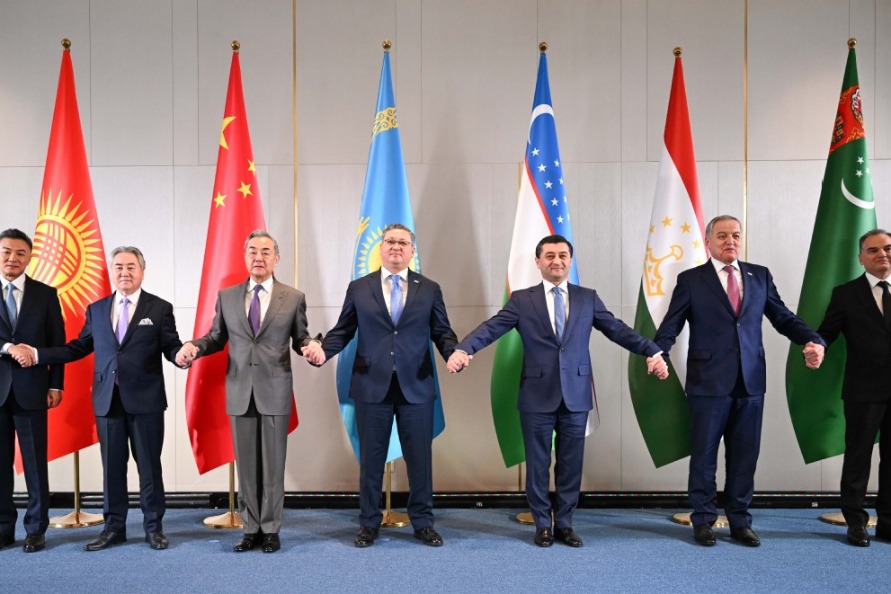Panels put rural homes on energy map
Villagers benefit from 'whole-county' pilot program's encouragement of distributed solar photovoltaic development. Hou Liqiang, Yuan Hui and Ma Jingna report.


In Donglian village, in Gansu's Gaotai county, many families can earn 1,000 yuan a year without having to make any investment or do maintenance work. They lease their rooftops to a company for distributed solar PV development.
Hu Zongren, a village committee official, said that after seeing a news report about a nearby village installing distributed solar power systems, he called his counterpart there to learn more about it.
His decision to bring in the company to tap the solar energy potential of rooftops in the village and increase residents' incomes soon won support from 36 families.
"Villagers don't have to worry about how much power the facilities can generate. They only have to check whether the rental is paid in a timely manner every season," he said, adding the company pays villagers 50 yuan a year for every piece of panel installed on their rooftops.
Niu Jianping, the head of the new energy department at the Gansu Provincial Development and Reform Commission, said the development of distributed solar PV is of great significance for the country's climate targets and rural vitalization.
The province has seen roughly 910.4 MW of distributed solar PV put into operation, he said, with over 40 percent linked to rural vitalization efforts.
"By promoting demonstration projects with guiding roles, we aim to drive widespread adoption of experiences gained from these projects to promote the clean, low-carbon transition in the rural energy system and effectively boost the construction of necessary infrastructure," he said.
Juungar Banner in Inner Mongolia is one of the 676 pilot areas for whole-county distributed solar PV development. Under the pilot program, the banner government plans to install solar panels on more than 3.3 million square meters of rooftops, providing a total capacity of 243 MW.
After the pilot program is completed, the solar panels are expected to generate 360 million kWh of electricity a year. That would help eliminate the use of 113,000 metric tons of standard coal a year and reduce carbon dioxide emissions by over 300,000 tons, the banner government said.
It added, however, that it had encountered some challenges in promoting household solar PV development in rural areas.
The cost of a household solar PV system is relatively high for rural residents, with a long payback period, it said, adding that had made rural residents less willing to install panels.
Some old rural houses also had small rooftops, and some farmers were worried installation would damage their houses, it said.
To address the problem, it urged the central government to introduce more subsidies to encourage the development of distributed solar PV and also increase the price paid by grids for power generated by rooftop panels.
The banner government also stressed the need to upgrade rural grids to improve their ability to access distributed solar PV power.
In Lianxing, Shi is looking forward to seeing more rooftop solar PV panels.
"It makes our village clean," he said. "I hope more will be installed because, if that happens, more job opportunities will be created for those with economic difficulties. They can clean the panels to make a living."
There were still many spaces suitable for panel installation, he said, adding "It's really something good."























